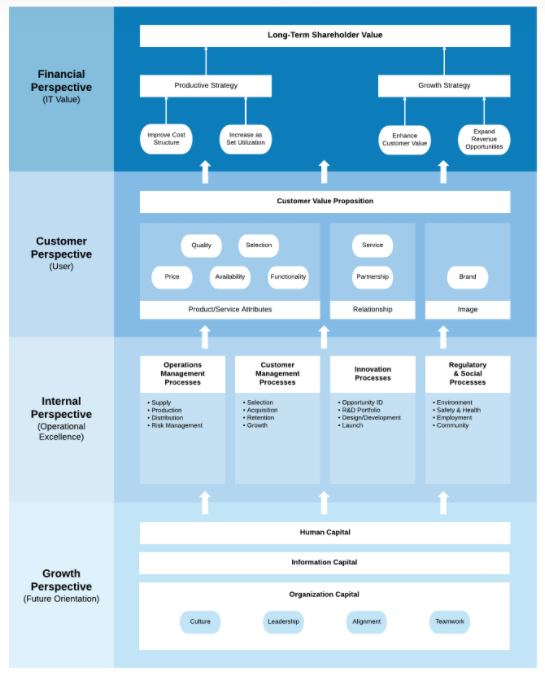In the last several posts we have been discussing strategy. We used Michael Porter’s definition of strategy:
“Strategy is choosing to perform activities differently than rivals do.”
A strategy is not just a list of goals. Like playing chess, each move is made deliberately to generate a specific outcome – a win. There are a cause and effect and interrelated nature to strategic decisions
How do you know if these strategic decisions are successful?
To answer this question, let’s get clear why a business exists.
There are three reasons:
- To make a profit
- To generate cash
- To achieve your mission (if you don’t accomplish #1 and #2, you can’t accomplish #3)
“Winning” means that you’ve achieved these top-level objectives.
No profit = you lost
No cash = you lost
We need a way to map, our strategic decisions/moves to these top-level objectives.
The answer is a strategy map that is born out of a strategic planning process called the balanced scorecard.
Lucid chart provides an example strategy map.

The strategy map says, “learning and growth” drive “internal processes” which drive “customer” value which drives “financial” performance.
In the next few blog posts, we’ll dig deeper here, and how you can apply this to your business.
If you need strategy help, contact us.